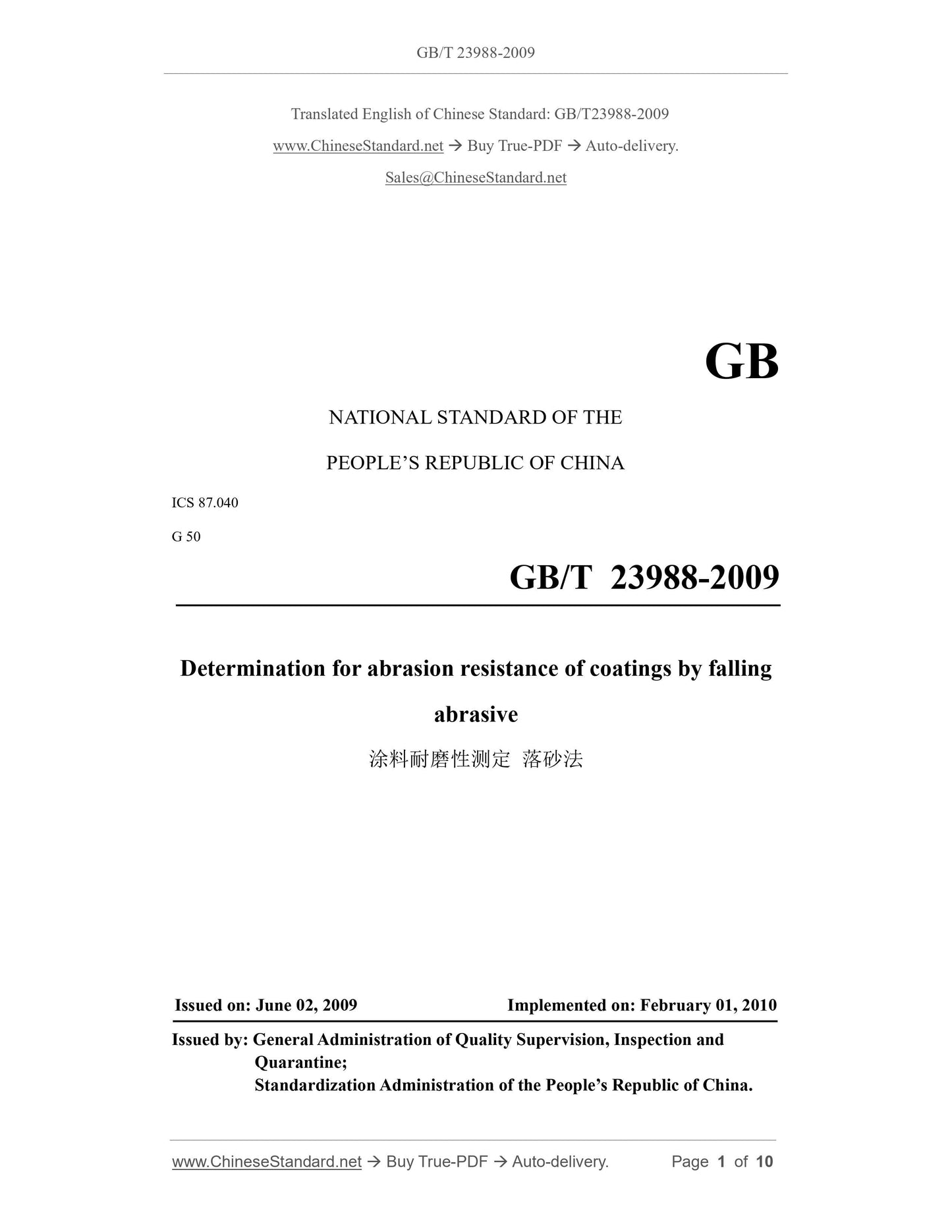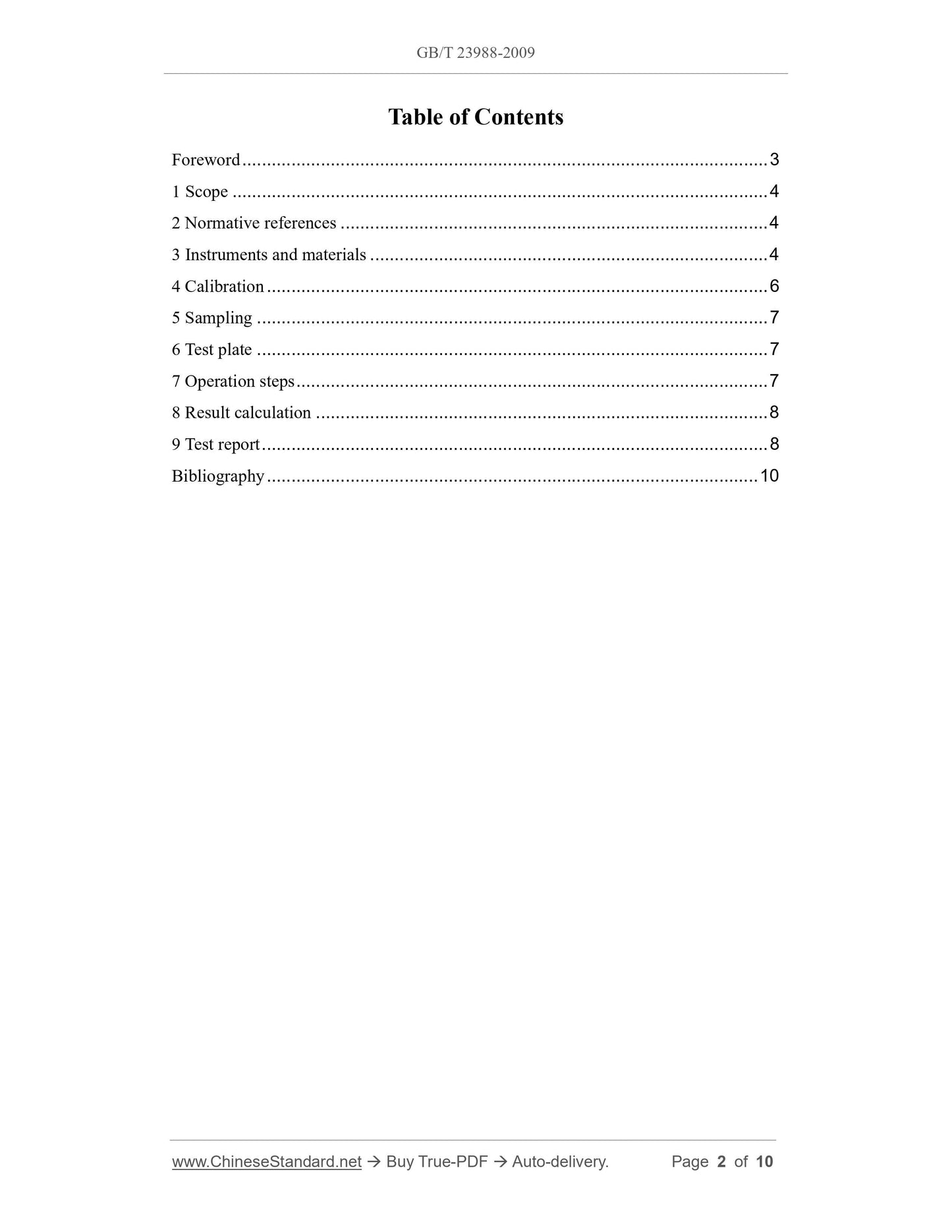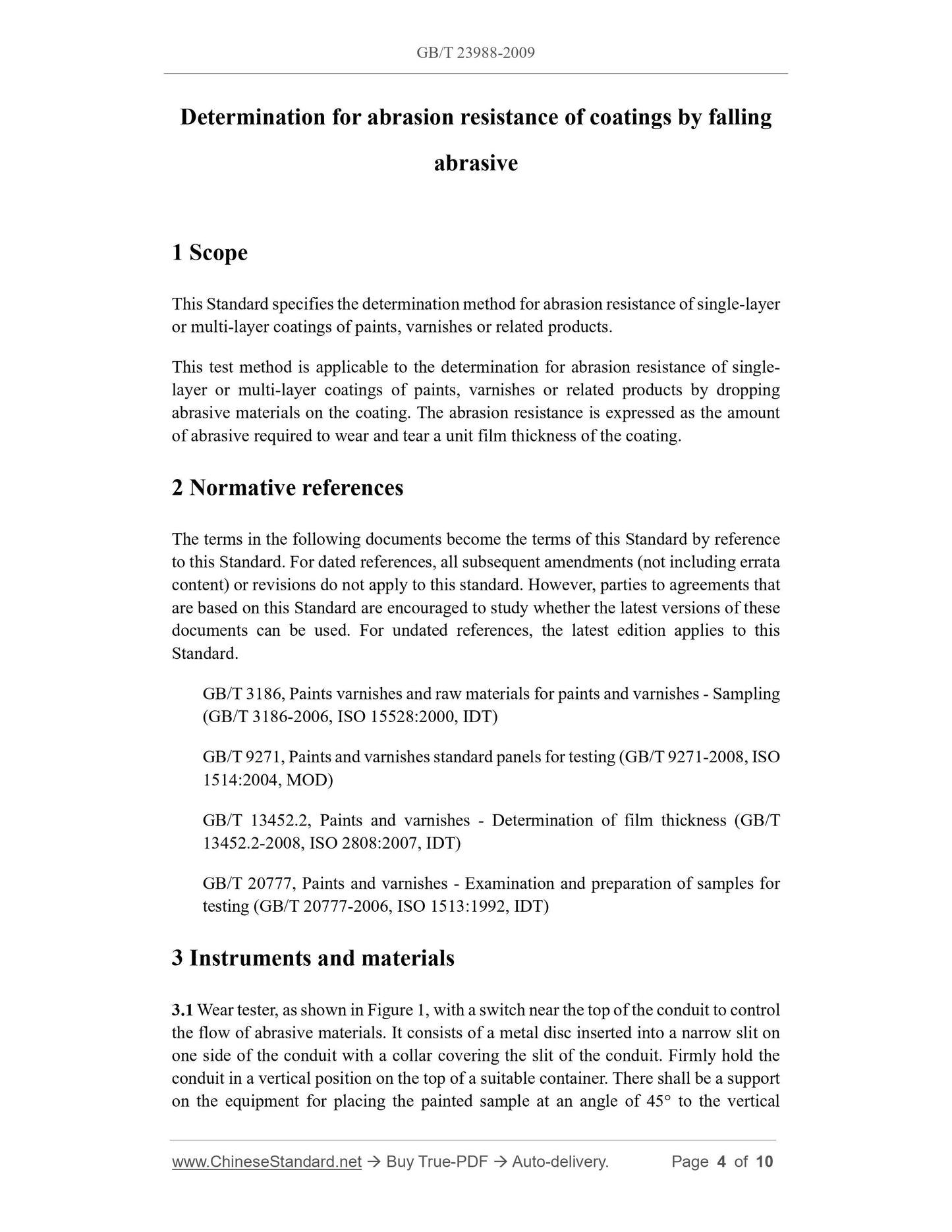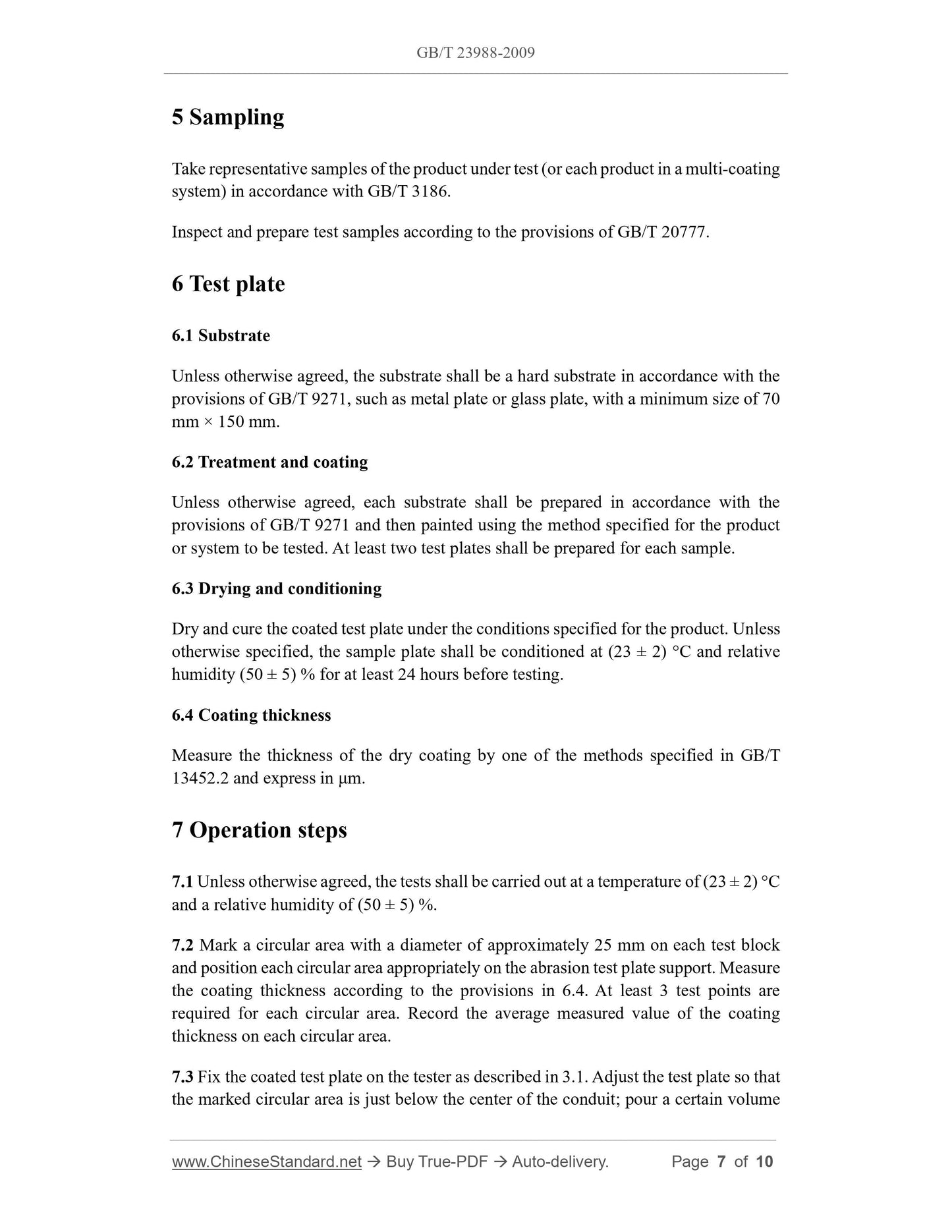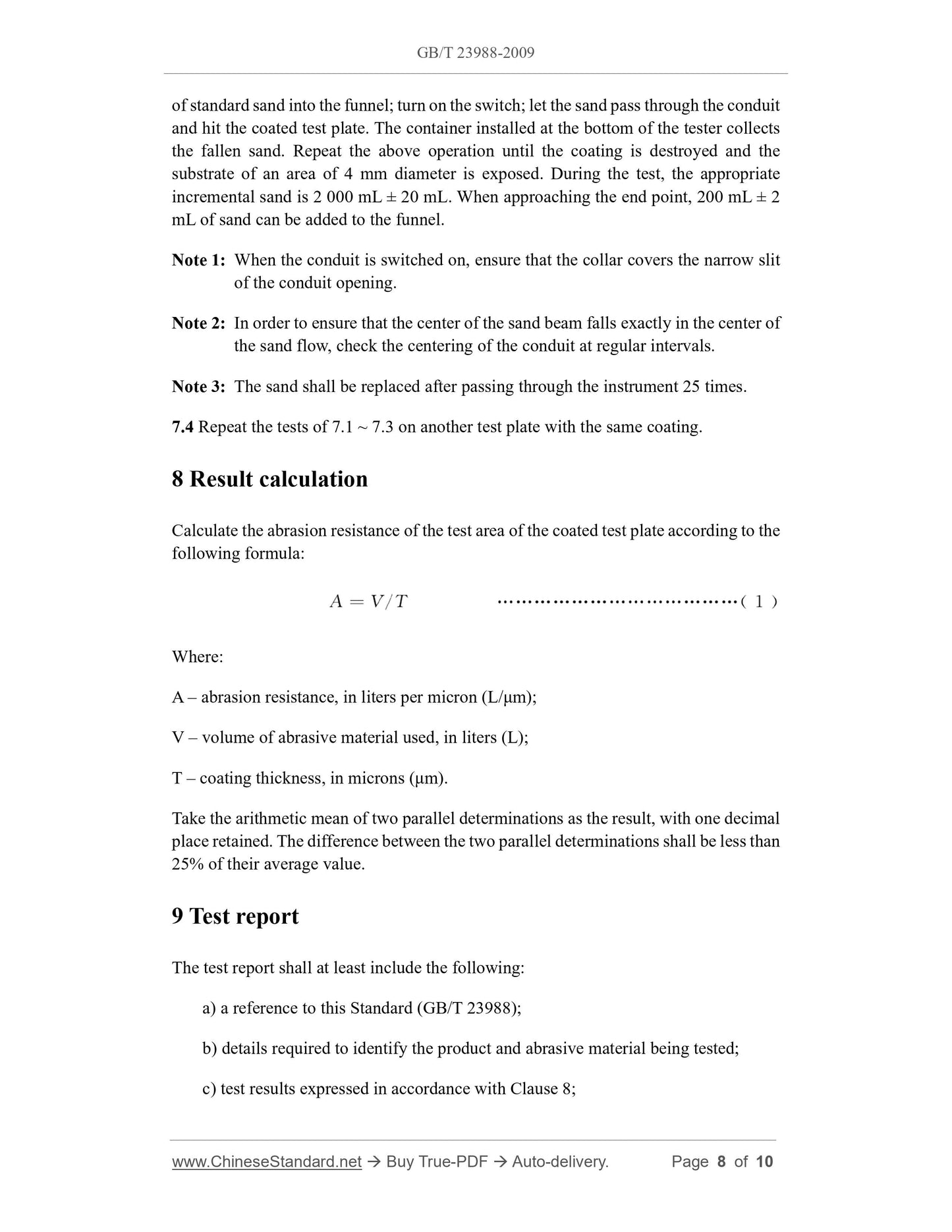1
/
of
5
www.ChineseStandard.us -- Field Test Asia Pte. Ltd.
GB/T 23988-2009 English PDF (GB/T23988-2009)
GB/T 23988-2009 English PDF (GB/T23988-2009)
Regular price
$105.00
Regular price
Sale price
$105.00
Unit price
/
per
Shipping calculated at checkout.
Couldn't load pickup availability
GB/T 23988-2009: Determination for abrasion resistance of coatings by falling abrasive
Delivery: 9 seconds. Download (and Email) true-PDF + Invoice.Get Quotation: Click GB/T 23988-2009 (Self-service in 1-minute)
Newer / historical versions: GB/T 23988-2009
Preview True-PDF
Scope
This Standard specifies the determination method for abrasion resistance of single-layeror multi-layer coatings of paints, varnishes or related products.
This test method is applicable to the determination for abrasion resistance of single-
layer or multi-layer coatings of paints, varnishes or related products by dropping
abrasive materials on the coating. The abrasion resistance is expressed as the amount
of abrasive required to wear and tear a unit film thickness of the coating.
Basic Data
| Standard ID | GB/T 23988-2009 (GB/T23988-2009) |
| Description (Translated English) | Determination for abrasion resistance of coatings by falling abrasive |
| Sector / Industry | National Standard (Recommended) |
| Classification of Chinese Standard | G50 |
| Classification of International Standard | 87.040 |
| Word Count Estimation | 8,841 |
| Date of Issue | 2009-06-02 |
| Date of Implementation | 2010-02-01 |
| Quoted Standard | GB/T 3186; GB/T 9271; GB/T 13452.2; GB/T 20777 |
| Regulation (derived from) | Announcement of Newly Approved National Standards No. 8, 2009 (No. 148 overall) |
| Issuing agency(ies) | General Administration of Quality Supervision, Inspection and Quarantine of the People's Republic of China, Standardization Administration of the People's Republic of China |
| Summary | This standard specifies the paint, varnish or related product or multi- layer film coating abrasion resistance measurement method. This test method is applicable to fall through the abrasive coating measured up paint, varnish or related product or multi- layer film coating wear resistance. Abrasion-resistant coating to the desired thickness of the unit amount of said abrasive wear resistance. |
Share
